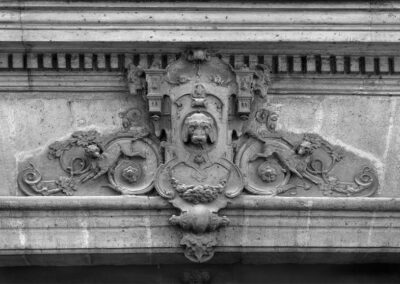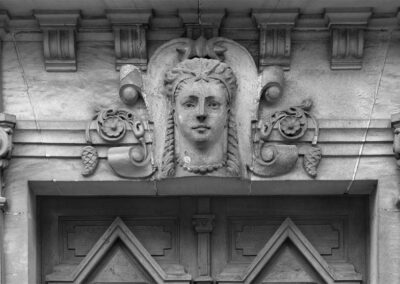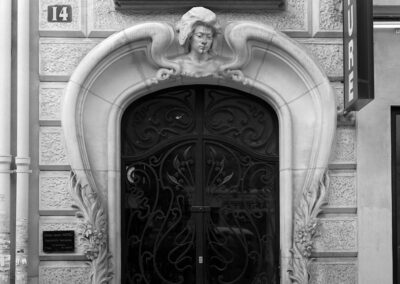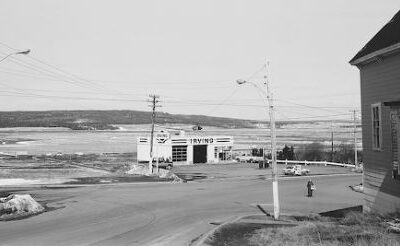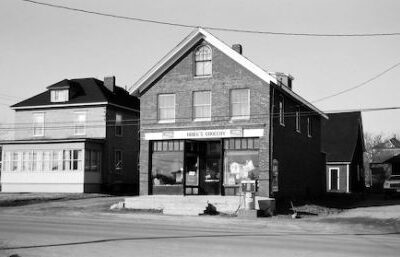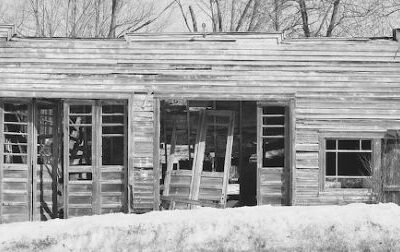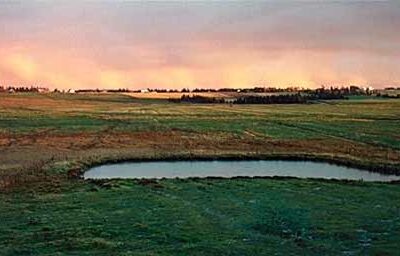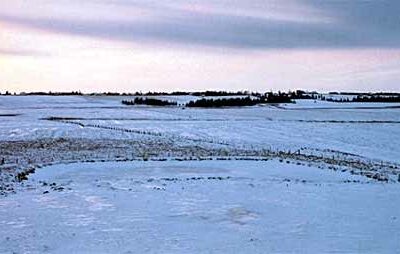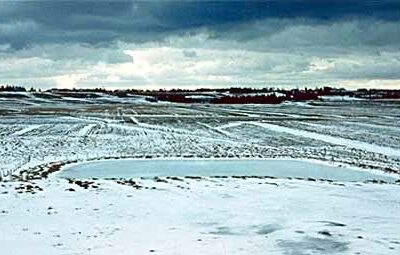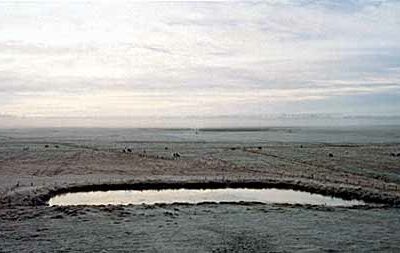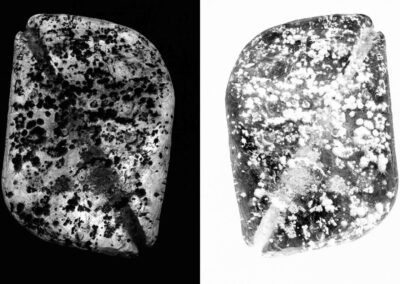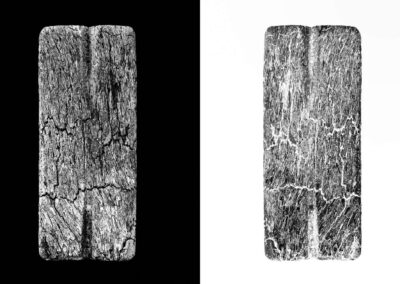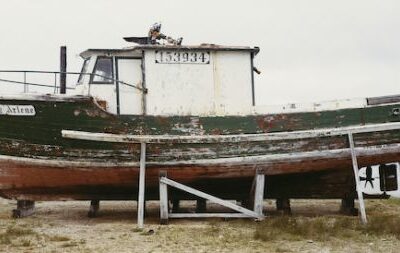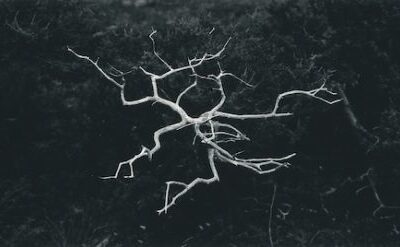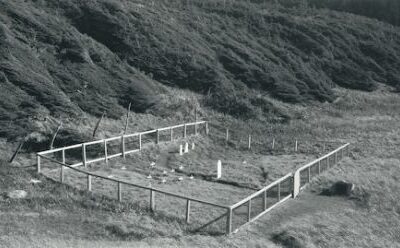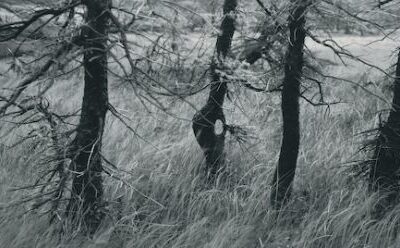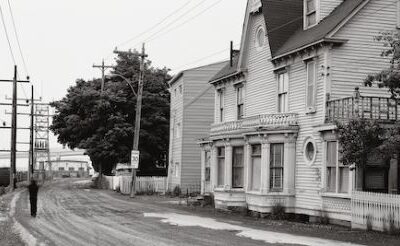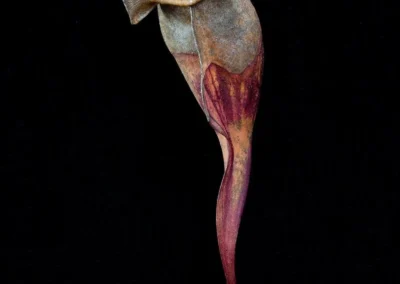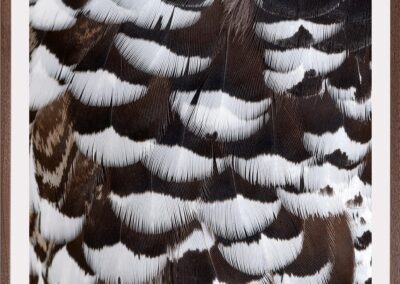Our next Artist You Need To Know is Thaddeus Holownia.
Thaddeus (Tadeusz) Holownia is a visual artist, teacher, letterpress printer and publisher, but Holownia is perhaps best known for his photographs that capture and combine an experience both personal and in a larger social sense, platforming environmental issues and a sense of community that is often centered upon the Maritimes in Canada.
The words of curator and arts writer Martha Langford : “Many of Holownia’s projects can be compared to the genre of ‘extended portrait’ — a durational work reflecting an intimate and evolving engagement.”
The images below are from his series Lintels of Paris, 2019 and Station Irving: Architectural Landscapes, 1979–2004.
Born in England in 1949, Holownia immigrated to Canada in 1954. Holownia earned a B.A. in Communication and Fine Arts at the University of Windsor in 1972. The artist would, after his education, become part of the Toronto art scene of the 1970s which was an energetic and seminal point in the history of photography in Canada. In 1977, Holownia took up a teaching position at Mount Allison University in Sackville, New Brunswick. He has lived and worked in the Maritimes since that time.
His career (both teaching and in the administrative sphere) spanned more than four decades. He is now retired but still creating artworks (notably in Jolicure, New Brunswick, which has been the subject of some of his past series, and his lens often documented both his immediate world in the Maritimes but also a number of other locales too).
From the ACI : “Holownia often returns to the same site to photograph transformations and create portfolios of particular subjects over time. He uses a large-scale view camera to capture minute details of wind and light, producing crisp black and white panoramic images…”
The images below are from one of his series specifically about Jolicure Pond, New Brunswick.
Holownia was elected to the Royal Canadian Academy of Arts in 2000. In 2001 he was awarded a Fulbright Fellowship : he has been awarded grants from the Canada Council for the Arts, the Ontario Arts Council, the American Institute of Graphic Arts, the Royal Canadian Academy of Arts, and the Social Sciences and Humanities Research Council. Named to the Order of New Brunswick in 2015, three years later Holownia would be inducted into the Royal Society of Canada as well.
The images below are from the series Corks which were created for the Bonavista Biennale 2019 (which had the theme of FLOE). Like much of Holownia’s work, it employs an immediacy – whether in an everyday ‘banal’ object or the world immediately outside our doors – to speak to larger issues of history and community. The artist’s words : “These corks were used in the east coast fishery and then discarded with the advent of plastics. I tie these artefacts to the Portuguese fishermen that fished the Grand Banks of Newfoundland for hundreds of years before the collapse of the Cod in the 1990’s and may have brought cork to trade with them.”
The series below is Gros Morne/West Coast, 1981–2002. The words of curator Bruce Johnson speaking to these images : “As Nova Scotia poet Peter Sanger (a longtime collaborator with Holownia on the books Ironworks and Arborealis as well as curating the exhibition Laminae and contributing an essay to the publication of the same name) observes ‘…the photographs may be seen and read as lyrical meditations upon a landscape and seascape which uncover the processes which created the Atlantic side of the North America continent with an overwhelming sense, for the observer, of continuous, present force.’”
He’s been in numerous exhibitions both solo and group. Notable examples include The Nature of Nature, The Photographs of Thaddeus Holownia 1976–2016 (Art Gallery of Nova Scotia); The Terra Nova Suite (The Rooms in St. John’s, Newfoundland, which was a quarter century overview of his works situated in that province); 24 Tree Studies for Henry David Thoreau (Beaverbrook Art Gallery in Fredericton, New Brunswick), and the Heckscher Museum in Huntington, New York.
Holownia also had a mid-career retrospective – mounted by the Canadian Museum of Contemporary Photography (which has since been ‘absorbed’ into the National Gallery of Canada during the false ‘austerity’ of the Stephen Harper government years) titled Extended Vision: Photographs by Thaddeus Holownia 1978–1997. Extended Vision toured to numerous sites across Canada as well as the Centro de la Imagen in Mexico City.
Below are some selections from the body of work about St. John’s, Newfoundland (1981–2006).
Holownia`s photographs can be found in a number of significant collections including the National Gallery of Canada, the Art Gallery of Nova Scotia, Spencer Museum of Art (Lawrence, Kansas, USA), Confederation Centre Art Gallery, Owens Art Gallery, Art Gallery of Newfoundland and Labrador, Glenbow Museum and many others.
A number of books and publications, often produced in collaboration with poets and writers, have also been produced by Holownia : the poetics of his images combine with the evocative words of the writers, and this can be seen even in the titles, such as Working in the Dark, Silver Ghost and Arborealis. More information about these books can be found here.
He was appropriately mentioned in the Art Canada Institute | Institut de L’Art Canadien‘s overview of the history of photography in Canada, and in speaking of his work they offered the following : Holownia “sets us right in the tidal muck, encouraging us to look carefully at the details of the constantly shifting environment. The work is a notable example of the artist’s photographs focused on place, histories of land use, architecture, and the impact of European settlement. Grounded in the landscape of the east coast, Holownia is known for his work featuring the environment, a decades-long exploration that has taken on great urgency in recent years.”
You can see more of his work at his site.

